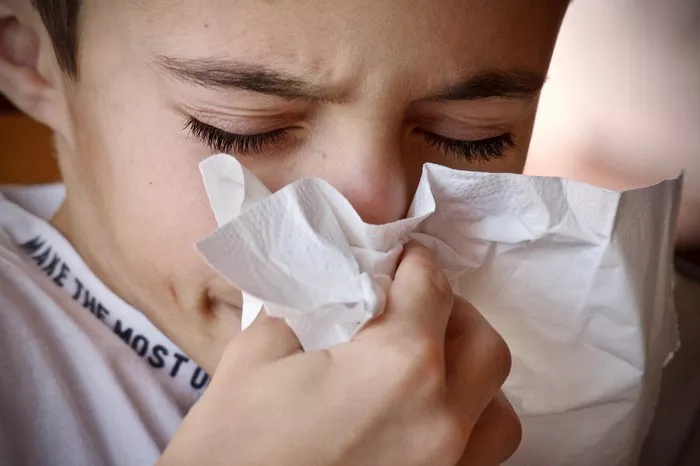Undergoing an allergy skin test is an important step in identifying potential allergens that may be causing discomfort or health issues. Once the test is completed, it’s essential to know what steps to take next to manage allergies effectively and improve overall quality of life. In this comprehensive guide, we’ll explore what to do after an allergy skin test, including interpreting the results, implementing allergy management strategies, and seeking further medical guidance when necessary.
Understanding Allergy Skin Test Results
After an allergy skin test, the results will indicate which substances, known as allergens, trigger an allergic reaction in the individual. These allergens may include pollen, dust mites, pet dander, certain foods, or insect venom. The test results typically categorize allergens into three main groups:
Positive Reaction: A positive reaction occurs when a raised, red bump (known as a wheal) surrounded by a small area of redness (known as a flare) appears on the skin after exposure to an allergen. This indicates that the individual is allergic to that specific substance.
Negative Reaction: A negative reaction occurs when no significant wheal or flare develops after exposure to an allergen. This suggests that the individual is not allergic to the tested substance.
Control Test: A control test is conducted using a harmless substance (such as saline solution) to ensure the accuracy of the skin test results. If the control test produces no reaction, it confirms that the skin test was administered correctly.
Implementing Allergy Management Strategies
Once the allergy skin test results are obtained, it’s time to implement strategies to manage allergic reactions effectively. Consider the following steps:
Avoidance: Whenever possible, avoid exposure to known allergens identified through the skin test. For example, if pollen is a trigger, stay indoors on days with high pollen counts, keep windows closed, and use air purifiers with HEPA filters to reduce indoor allergens.
Medication: Depending on the severity of allergies, over-the-counter or prescription medications may be recommended to alleviate symptoms. Antihistamines, nasal corticosteroids, decongestants, and allergy shots (immunotherapy) are commonly used to manage allergic reactions.
Allergen Immunotherapy: For individuals with severe allergies that significantly impact their quality of life, allergen immunotherapy may be recommended. This treatment involves gradually exposing the individual to small amounts of allergens to desensitize their immune system and reduce allergic reactions over time.
Allergy Action Plan: Develop an allergy action plan in collaboration with a healthcare provider. This plan should outline specific steps to take in the event of an allergic reaction, including the use of medications, when to seek medical attention, and emergency contact information.
Environmental Modifications: Make modifications to the home environment to minimize exposure to allergens. This may include using allergen-proof mattress and pillow covers, regularly vacuuming and dusting, and keeping pets out of the bedroom if pet dander is a trigger.
Dietary Changes: If food allergies are identified through allergy testing, work with a dietitian or healthcare provider to develop a safe and balanced diet that avoids triggering foods and ensures proper nutrition.
Monitoring Symptoms and Seeking Further Evaluation
After implementing allergy management strategies, it’s important to monitor symptoms closely and seek further medical evaluation if necessary. Pay attention to any changes in symptoms or the development of new allergic reactions. Additionally, consider the following factors:
Follow-Up Appointments: Schedule follow-up appointments with an allergist or immunologist to assess treatment effectiveness, adjust medications or treatment plans as needed, and discuss any concerns or questions.
Emergency Preparedness: Be prepared for allergic emergencies by carrying epinephrine auto-injectors (such as EpiPen) if prescribed. Learn how to recognize the signs of anaphylaxis and administer emergency treatment if needed.
Symptom Tracking: Keep a detailed record of allergic symptoms, triggers, and medication use to share with healthcare providers during follow-up appointments. This information can help guide treatment decisions and identify patterns or trends in allergic reactions.
Additional Testing: In some cases, further testing may be recommended to evaluate specific allergy triggers or assess the effectiveness of treatment. This may include blood tests, oral food challenges, or additional skin testing.
Lifestyle Modifications: Make necessary lifestyle modifications to accommodate allergy management strategies. This may include adjusting travel plans to avoid known allergens, informing caregivers or school personnel about allergies, and educating family members or roommates about allergy triggers and emergency procedures.
Conclusion
In conclusion, navigating life after an allergy skin test involves interpreting the results, implementing allergy management strategies, and seeking further medical guidance when necessary. By understanding and effectively managing allergies, individuals can reduce the impact of allergic reactions on their daily lives and improve overall quality of life. Remember to work closely with healthcare providers to develop personalized treatment plans and regularly monitor symptoms for optimal allergy management.
[inline_related_posts title=”You Might Be Interested In” title_align=”left” style=”list” number=”6″ align=”none” ids=”7375,7317,7311″ by=”categories” orderby=”rand” order=”DESC” hide_thumb=”no” thumb_right=”no” views=”no” date=”yes” grid_columns=”2″ post_type=”” tax=””]

































